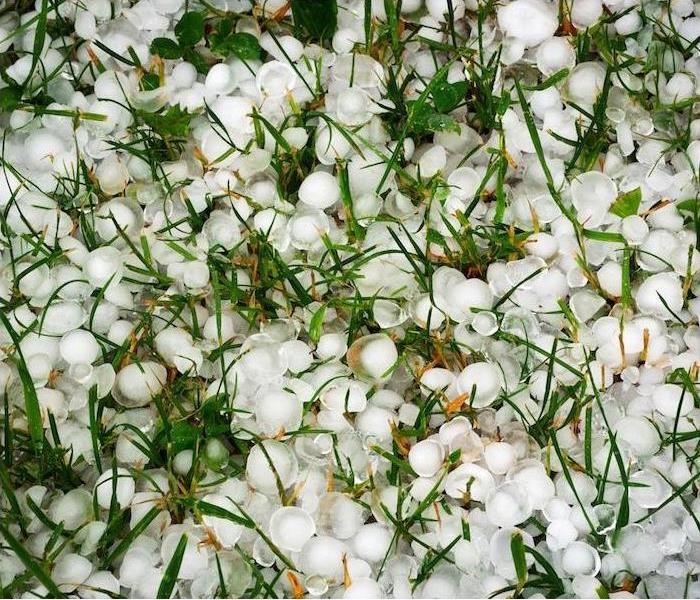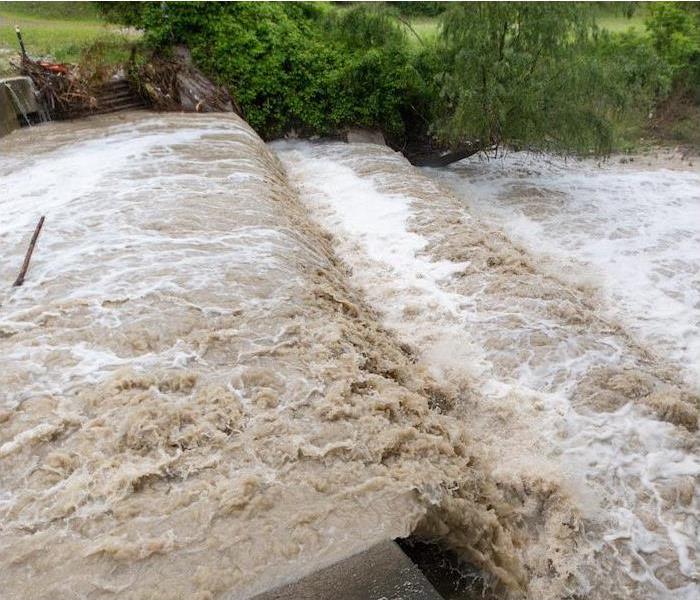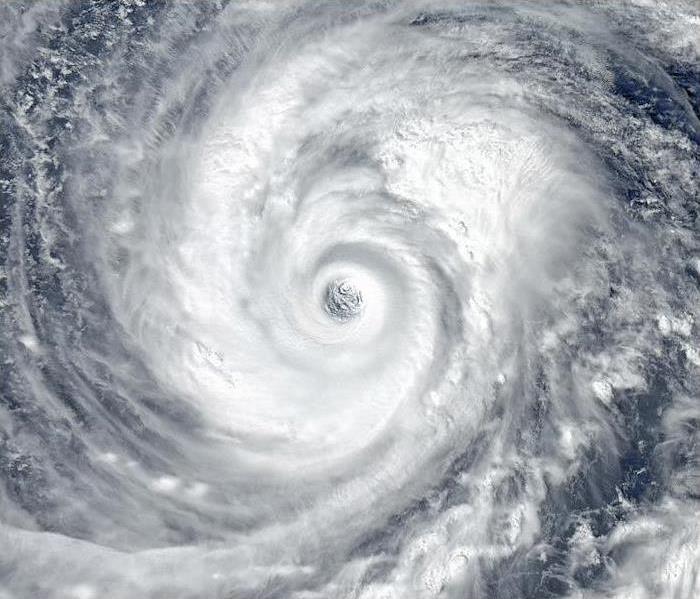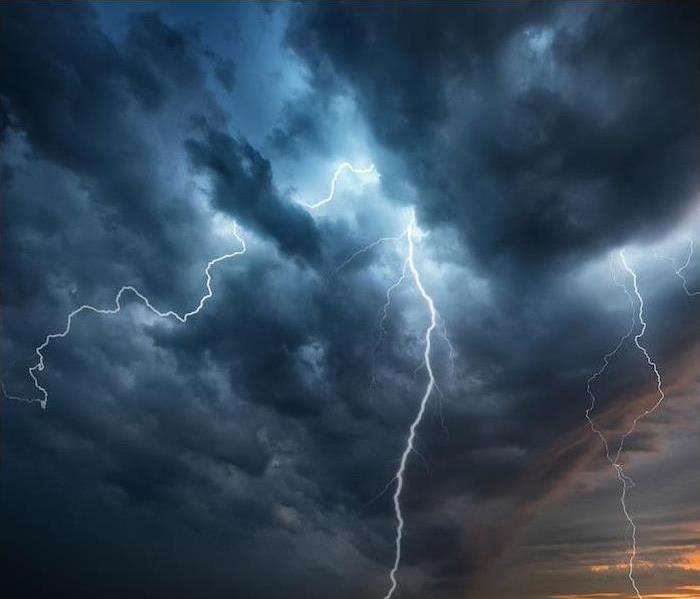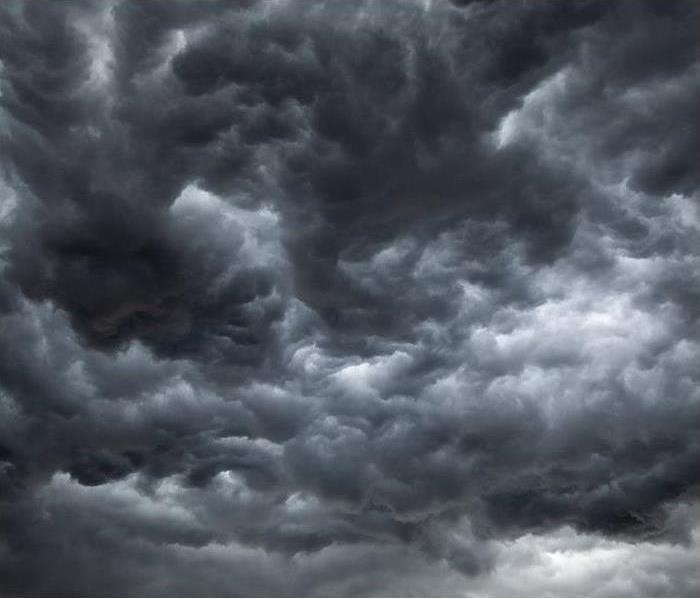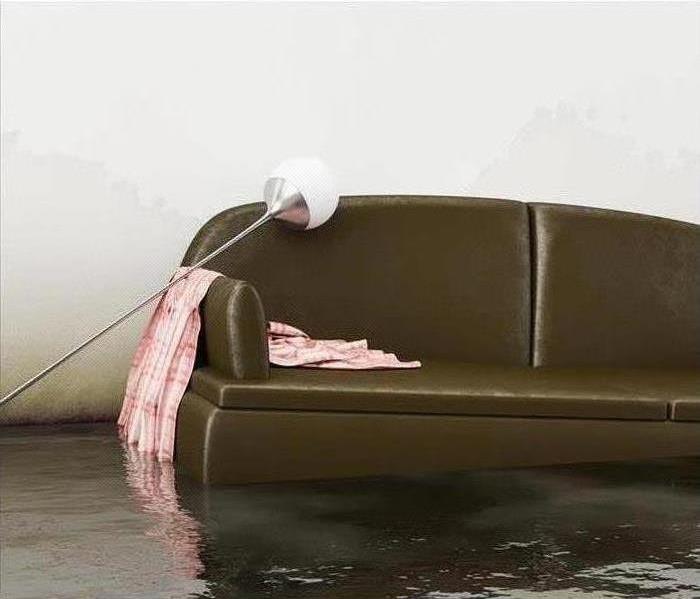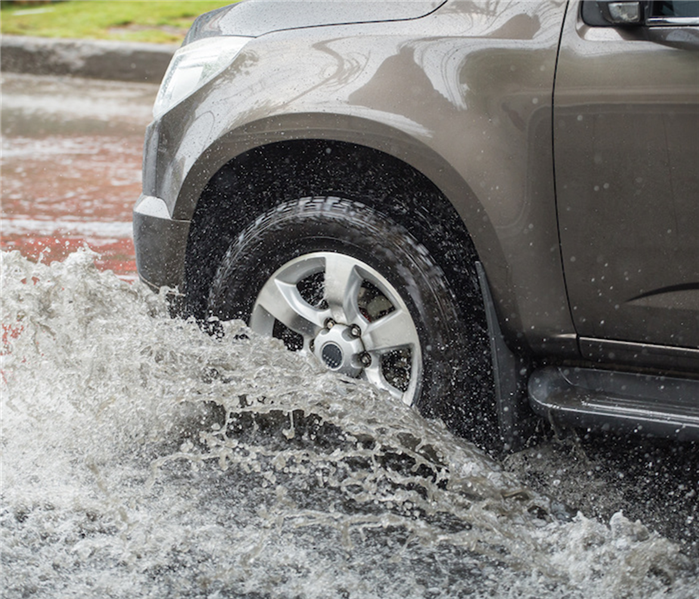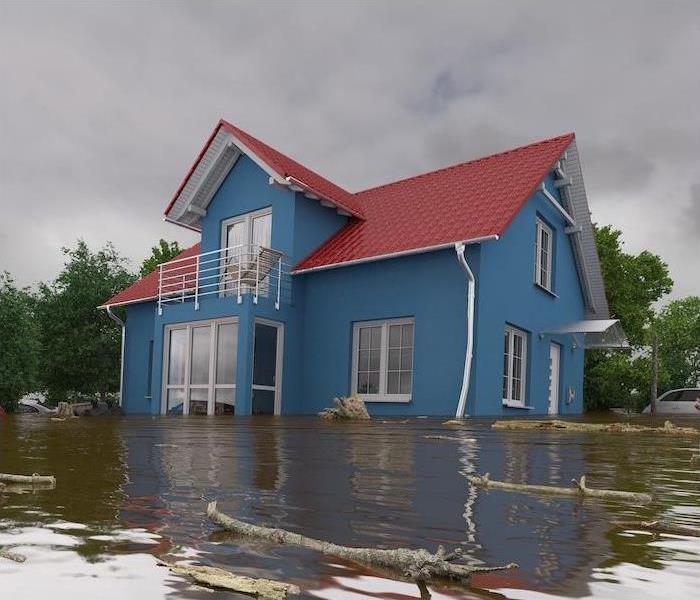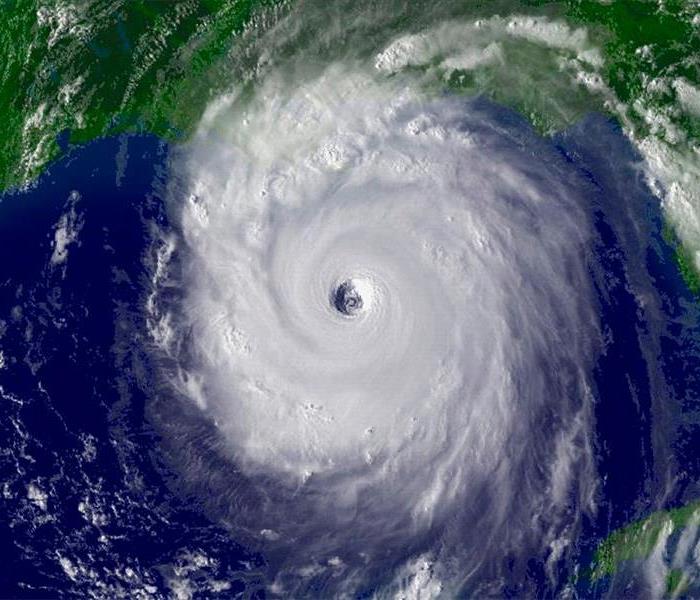Archived Storm Damage Blog Posts
Winter Weather Advisories and Damaging Storms on The Eastern Shore
1/7/2022 (Permalink)
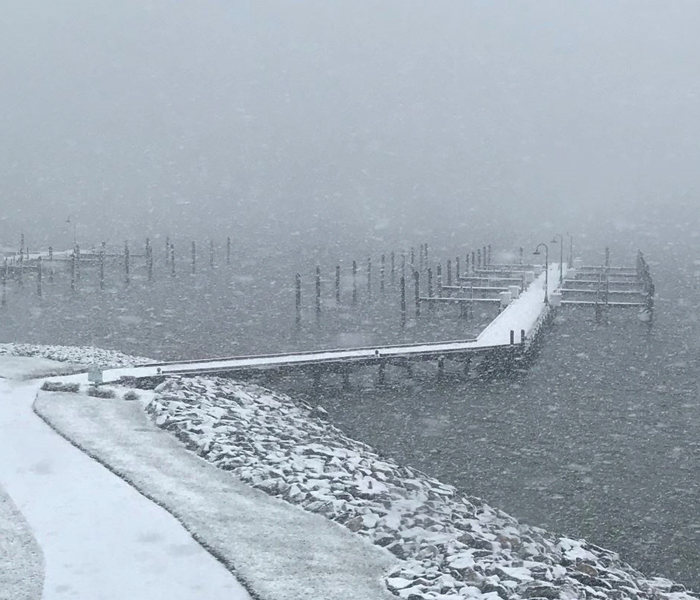 Snow scenes across the Shore can be beautiful, but heavy snow and wind can cause damage to your home. SERVPRO of The Lower Shore (410) 749-2221.
Snow scenes across the Shore can be beautiful, but heavy snow and wind can cause damage to your home. SERVPRO of The Lower Shore (410) 749-2221.
Winter has arrived on the Eastern Shore and with it comes Winter Weather Advisories. The individual advisories outline what emergency officials are recommending, depending on the weather event. For example, if a few inches of snow are being forecasted overnight, the advisory might ask you to slow down on your morning commute. The Winter Weather Advisories also warn about specific conditions like, "plan on slippery road conditions."
Winter weather can also mean storm damage. SERVPRO of The Lower Shore, specializes in storm and flood damage restoration. If your home or business is damaged by winter storms call SERVPRO of The Lower Shore (410) 749-2221.
Trained to Restore Your Home or Business
Our crews are highly trained, and we use specialized equipment to restore your property to its pre-storm condition. SERVPRO of The Lower Shore is an IICRC firm. The Institute of Inspection, Cleaning and Restoration Certification (IICRC) creates the standards for the restoration industry and provides training and certification to restoration companies. We believe in continuous training, from initial and ongoing training at SERVPRO’s corporate training facility to regular IICRC-industry certification, rest assured our staff is equipped with the knowledge to restore your property.
It's not just about our training and experience. It's also about being able to respond to your damage quickly. SERVPRO of The Lower Shore is available 24 hours a day for storm emergencies, large or small. We can also handle fire and water damage as well as remediate mold.
If you want to learn more about how our team can help if you have storm damage
SERVPRO of The Lower Shore Storm Damage
If you have questions about storm, water or fire damage give us a call (410) 749-2221. Stay safe this winter and for the latest road conditions in Virginia or Maryland, call 5 1 1.
Hail Is a Threat to Your Ocean City Business | SERVPRO® of The Lower Shore
10/18/2021 (Permalink)
You know how every superhero team has somebody who, though they may possess incredible powers and abilities, still gets viewed as kind of an also-ran? That’s the story of hail for many people.
Maybe it’s because other natural weather occurrences possess more spectacle or pizazz that they get all the headlines, but whatever the reason, hail is the Hawkeye of natural disasters. But hail deserves more respect—it’s actually one of the most damaging weather threats we face in the United States.
Hail causes an average of about $11 billion in damages every year, and it’s not surprising considering there were over 4,600 hailstorms last year alone.
And while Maryland isn’t exactly part of the Midwest’s “hail alley” (though the alley is widening), hail can strike anywhere, at anytime, when the conditions are right, and the conditions are right across the U.S. more often than almost anywhere else on the planet.
So as an Ocean City area business owner, what can you do to prevent hail damage and protect your valued assets?
Take care of your roof. Your roof takes a beating constantly from sun, rain, critters and their factors, but hail can cause acute damage, especially large hail. Always inspect your roof after any major storm, looking for broken or damaged shingles, or granules on the ground or in your downspouts. Don’t wait when you see damage or when your roof starts to show signs of wear—get it fixed or replaced to save yourself damage from invasive water.
Reinforce your windows. Impact-resistant windows are doubly helpful for coastal businesses, because they can minimize the potential impact of both hail and tropical storms. Large hail can definitely shatter standard glass, and of course you’re certainly aware of the power of hurricanes—installing stronger windows can help prevent breakages, and it may actually decrease your insurance costs in the process.
Keep assets covered. Some hail damage is preventable simply by moving some things indoors or under covers. Any outdoor equipment that can be moved inside or covered should be taken care of in an impending storm, and company vehicles can be moved to garages or carports for protection. Even if you have to pay a few bucks to park in a carpark, it’s worth it to keep from having to repair dents or broken windows. Keep important indoor assets away from windows during heavy storms as well. And of course, keep your most valuable assets—your team—safe during hail and thunderstorms as well, by keeping them indoors until it’s safe outside again.
Hail damage happens, but when it does we’ll be there to fix your business up. Contact SERVPRO today to see how quickly we can help you recover from damage of all kinds.
What Causes Flash Flooding? | SERVPRO® of The Lower Shore
9/20/2021 (Permalink)
Did you know that flash floods are the leading cause of weather-related deaths in the United States? Due in part to their unpredictability and also in part to the fact that humans are sometimes cavalier about their risk, this statistic proves that we may need some further education about one of nature’s most common weather threats.
Flooding in a general sense is the overflow of water onto normally dry land, and typical river or stream flooding is a more long-term occurrence that may last days or weeks.
Flash flooding, on the other hand, arises quickly, over the course of a few hours or even less. Flash floods are more prone to create the heavy, rushing sub streams that take over neighborhood streets and wash entire roads or bridges away.
These kinds of floods can have varying causes, such as:
Intense rainfall. Most obviously, heavy rains that either move slowly or come to rest over an area can cause flash floods. Similarly, repeated storms over short periods in the same area can overwhelm streams and nearby waterways, even hours after rainfall has ended.
Soil considerations. Different types of soil have varying capacities for retaining and soaking up rainfall. Sand, for example, can absorb water more readily than silt or clay. It stands to reason that saturated soil that reaches its maximum absorption level would then cause runoff and flooding to occur, but it’s also true that dry, thin areas of soil can be overwhelmed by rapid rainfall, which means certain areas are prone to flash floods even in drought conditions because of their soil type.
Urban growth. You might not have considered this, but larger cities experience flooding in downtown areas where everything is pavement and concrete, because these materials don’t soak up nearly the amount of rain that soil would. This is why flash flooding in urban areas is particularly dangerous—until the water finds an outlet, it’s unlikely to be slowed by gradual ground absorption.
Snowmelt and ice jams. In areas that experience long or heavy freezes, deeply packed snow and ice can be melted by springtime rains, which can produce flash flooding. Ice jams occur when frozen areas of rivers and streams melt with rain and jam up against bridges or other structures, causing water to rise behind them. If the water is suddenly freed, it can cause flash flooding as it overwhelms the stream’s capacity.
Structure failures. Dams, levees and other structures designed to hold back bodies of water do develop issues from time to time, such as the respective failures of the Lake Needwood and St Mary’s Lake dams in 2006 and 2011. Heavy rains and losses of integrity can cause rampant, rapid flooding over entire areas.
If flooding has invaded your home or property, we’re here to get you back in the dry. Contact SERVPRO today to get a local emergency team onsite right away.
How Do Hurricanes Form? | SERVPRO® of The Lower Shore
8/5/2021 (Permalink)
Hurricanes are well-respected as the most potentially dangerous storms we encounter in the United States, and the most violent storms on earth. Regularly causing billions of dollars in damages, hurricanes like 2005’s Katrina and the Great Miami Hurricane of 1926 have wielded the destructive potential to threaten the future of entire major cities.
Here in Maryland we have encountered our share of Atlantic tropical cyclones and hurricanes, having suffered over 130 of them since 1950.
Most of the time, we likely don’t think about the formation of hurricanes—we just get a notification that something has already formed in the Atlantic, and we keep an eye on it to see where it goes and pray it doesn’t make landfall. But the formation of the storm itself is an interesting process, and worth examining.
It gives us insight into the nature of the storms, why they happen where they do and the future potential of rising global ocean temperatures.
Ingredients of a Hurricane
A hurricane needs at least three ingredients operating in harmony (or perhaps you’d call it dissonance?) to originate:
- A tropical disturbance. This is an official term, not a general one, for an accumulation of loosely-packed rain clouds that cause thunderstorms for a sustained period of at least 24 hours.
- Ocean conditions. Ocean depths of at least 150 feet and temperatures of slightly over 80 degrees make for the right setting for storm formation as ocean waters evaporate.
- A little wind. Calm winds, not extreme winds, are necessary to get these major storms started.
Formation of a Hurricane
The warm, moist air caused by the conditions listed above becomes the fuel that energizes and feeds a hurricane. It rises up and away from the surface, causing a kind of vacuum of low pressure (think of it as having less air) just above the surface.
High pressure air then sweeps in to try to fill this void, but the warm conditions just cause it to rise, too, and the cycle begins. The rising warm air cools in higher atmosphere, causing water particles to condense and form clouds. This pattern continues and grows in strength as long as the warm air and moisture are there to feed it.
The rest is just categorization. The storms grow from a tropical disturbance all the way up to Category 5 hurricanes depending on the abundance of atmospheric conditions.
Storms begin to dissipate when they reach land or areas of cooler water, but as we’ve seen, this doesn’t stop them from dumping massive amounts of rain and flood waters into the area.
When water of any kind causes damage to your home or business, we’re here to help. Click or call your local SERVPRO today to learn how we can assist in water damage recovery.
Taking the Guesswork out of Thunderstorm Preparation | SERVPRO® of The Lower Shore
5/17/2021 (Permalink)
Protecting your home during a thunderstorm can be difficult, but managing regular maintenance of your home all year means for a better peace of mind and potentially lesser impact from a severe storm.
If you take care of the upkeep throughout the year, you save yourself a lot of time and effort if a storm is approaching.
Prepare Your Home for a Severe Thunderstorm
These steps can help you protect your home:
Check the equipment. If you have a generator, check it intermittently throughout the year. Run it for a while to double-check that everything is in good working condition and make sure you always have gas on hand. Inspect your flashlights, making sure they work and have fresh batteries in them. Invest in surge protectors, and make sure your electronics and appliances are safe in case of a power surge.
Look for yard debris. Double-check your yard for fallen limbs and make sure they are picked up. If you have a trampoline or lawn furniture, tie it down or, if possible, move it inside when it’s not in use. Make sure to keep your fence pickets sturdy and secure. If they are wobbly go ahead and make the correction now.
Reinforce garage doors. Garage doors are nice, but they can easily succumb to windy conditions. You can reinforce these with grits and strengthen the wheel tracks. You could also help reinforce the door by placing things behind the door so that it has some extra support.
Prepare an emergency kit. Things you will need to keep in your emergency kit are: water, non-perishable food, batteries, flashlights, a can opener, pet food, medications, blankets, paper and pencils.
Getting ahead of the storm by being as prepared as possible is the best way to limit potential damage to your property. But if the storm has caused damage to your home or business, we have the resources and training to help you get back to normal as quickly as possible.
Contact us 24⁄7 to find out how our processes and technicians can help.
Preparing for Maryland’s Thunderstorm Season | SERVPRO® of The Lower Shore
4/14/2021 (Permalink)
The weather is finally warming up here in Maryland. And that’s great news for kids and families who want to get outdoors and enjoy some warm, sunny days!
Life definitely gets sweeter on The Lower Shore when we can go outside and enjoy longer, warmer days. But this season also brings with it some weather risk that Marylanders need to be aware of, so they can prepare their homes and families for what to do—and be sure their homes are in the best shape possible to withstand anything the weather throws at them.
Flooding in Maryland
Storms, both tropical and otherwise, can bring a lot of rainfall to our region. In fact, two of the worst natural disasters in Maryland’s history happened because of flooding related to storms.
While both of these events were related to tropical systems, Maryland is prone to flooding on a smaller scale. So you need to be able to take the right steps to protect your home. Here are some things experts recommend to help you prepare for severe weather.
Be sure your roof is ready. The rains and winds that can bring flooding can also cause issues for your roof. Have it inspected so you can rest a little easier, knowing that leaks and missing shingles won’t be a problem.
Store your outdoor furniture (or secure it). In the right conditions, outdoor furniture that isn’t secure can become a hazard. Don’t let that happen! Work to make it secure instead. If you can’t, consider putting it away for a while if major storms are forecast.
Prepare your family, too. This is where an emergency kit and a disaster plan can make a difference. Talk with your family about how you will handle severe weather, what you need, and if your area is under a severe threat, the best places to take shelter.
If you need help dealing with damage caused by water, fire or any other issue, we’re here to help you restore your home. We have crews who are available 24⁄7 in the event of an emergency. Contact us at any time to learn more about us and how we can help you restore your home to its original state.
Protect your home from flood waters. l SERVPRO® of The Lower Shore
3/30/2021 (Permalink)
Flooding is the most common disaster in the United States. It can be very costly and can occur anywhere and anytime it rains, even if your property is not located next to a large body of water.
Homeowners should know their flood-zone. You can begin to evaluate your risk by checking at FEMA’s online Flood Map Service Center. Locate the base flood elevation (BFE) for your home, or the elevation at which your building has a 1 % chance of flooding in a given year. Structures should be at least 3 foot above the BFE.
It is recommended you speak with your insurance agent about flood insurance as it pertains to your policy as flood damage is not typically covered by a standard homeowner policy. Just a few inches of water can cost thousands of dollars with data demonstrating over 25% of claims coming from areas outside of the high-risk flood zone. The National Flood Insurance Program can help you locate insurance.
Steps to Prepare for a Flood:
- Make an inventory of personal belongings by taking photos as well as a video of your property, household items and valuables if possible.
- Keep certifications, passports, medical records and other important documents like insurance paperwork in a watertight box.
- Raise electrical components at least 12 inches above your BFE and have utilities like HVAC units placed at higher elevations such as second story levels or even roofs. Install a sewer backflow valve to prevent sewage from returning to the structure. Regularly check to make sure your sump pump is operational and has a battery back-up if available for your unit.
- Check your property’s slope, to ensure water runs away from your structure and that gutters are free of debris. Reducing impervious surface, like concrete and asphalt with green spaces that absorb rainfall are additional measures to reduce flooding.
- Anchor loose property and propane tanks to prevent property damage and contamination of the flood water from chemical leakages.
If a flood is expected, move your valuables to higher ground. Elevate or move furniture if possible. Stay alert, follow the guidance of local officials. Never drive into flood waters, regardless of the apparent depth as there may be unseen currents. Make sure you have a plan in place and a “go kit” (an emergency supply kit consisting of a waterproof tub filled with drinking water, dry or canned food, batteries and other essentials). Be prepared for potential long term power outages.
Once a flooding disaster has passed, contact SERVPRO® of The Lower Shore to obtain assistance with your remediation needs at 410-749-2221.
How Can I Make Sure Severe Weather Does Not Pose a Risk to My Family? | SERVPRO® of The Lower Shore
12/9/2020 (Permalink)
As you think about all the ways to protect your family from harm, there are few things more important than considering a severe weather action plan for them. While severe weather may seem like an abstract and unpredictable threat, knowing what to do if you find yourself in its path can help you stay safer and even save a life in some incidents.
While there is no way to predict severe weather or to avoid it, there are plenty of ways that you can make a plan to keep your family safe from harm if it strikes. Below, we will look at some of the top ways that you can be certain your bases are covered in the event of severe weather so you and your family can achieve peace of mind.
Questions to Ask for Your Severe Weather Preparedness Plan
Do I have all the supplies I need at home? Severe weather can knock out power as well as cell networks and utility services, so it is always a good idea to make sure you have everything you need to be self-sufficient for at least a few days. Pack an emergency kit with enough food and water to last your family several days, and be sure to include other essentials such as first-aid supplies and comfort items as well.
Do I have a way to receive weather alerts? Staying tuned into the alerts issued by local officials can provide you with helpful information such as watches and warnings so you can be aware of the weather conditions that often change rapidly. Cell phones can be unreliable during severe storms, so having a radio or other low-tech method for receiving alerts is advised.
Do I have an evacuation plan? While staying put is typically the advised course of action during a severe thunderstorm, if heavy, sustained rain leads to the development of flash flood conditions, you may find yourself needing to evacuate to get to a safer spot. Make sure you have an evacuation plan in mind, complete with several different driving routes in case your preferred road becomes blocked by water.
If your home has damages due to severe weather of any kind, we are here to help. We can provide 24⁄7 restoration services so you never have to wait to give us a call. Contact us today to learn more.
Making Sure Your Business Is Protected in the Event of a Flood | SERVPRO® of The Lower Shore
3/31/2020 (Permalink)
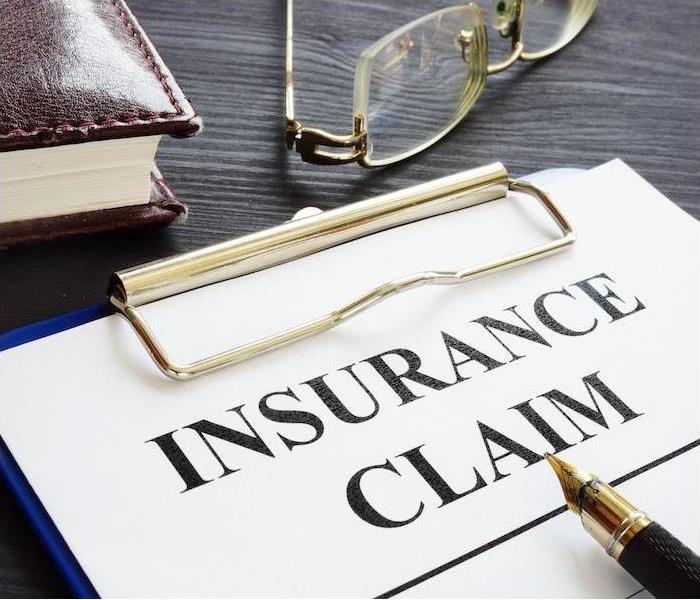 This photo is of a clip board with a letter that says INSURANCE CLAIM.
This photo is of a clip board with a letter that says INSURANCE CLAIM.
Flooding is one of the most devastating types of damage that a business can endure from a natural disaster. FEMA reports that just one inch of water can lead to approximately $27,000 in damage—and unfortunately, many commercial policies do not extend any coverage to flooding-related issues. Understanding the details of flood insurance and what it means for your business can help you determine if it is an extra expense you can justify to protect your business.
Your Guide to Commercial Flood Insurance
Make sure to purchase your policy in advance. Flood insurance is something that business owners hope that they never have to use, but just in case you do, be sure to make your purchase well in advance. There is a mandatory 30-day waiting period for coverage to kick in on flood policies to prevent fraudulent policy purchases, so do not wait until a storm or other natural disaster is in the forecast to explore your options.
Know what is and is not covered. Though flood insurance provides many additional coverages for your business, it still does not cover absolutely everything. Flood insurance covers flood-related damages to both your business’s building, as well as the contents within. This includes floods from situations like broken dams, storm surges, blocked storm drains and prolonged rains, but to be considered a flood, the water must impact at least two properties or a minimum of two acres. However, property outside the building will generally not be covered, and if you would like protection for your commercial vehicles, this will likely need to be added to the policy.
Determine your flood risks. There is no sure way to determine how likely you are to experience a flood. While making use of the FEMA Flood Map online tool will provide more context for historical risks, floods are becoming more common even in areas that are traditionally not considered flood zones. It is wise to take a detailed overview of your flood risks and err on the side of caution when determining if you require coverage.
Has your business been impacted by flooding? We are here 24⁄7 to respond to water damage and begin restoration. Contact us to learn more.
Reasons to Take Storm Damage Prevention Seriously | SERVPRO® of The Lower Shore
3/31/2020 (Permalink)
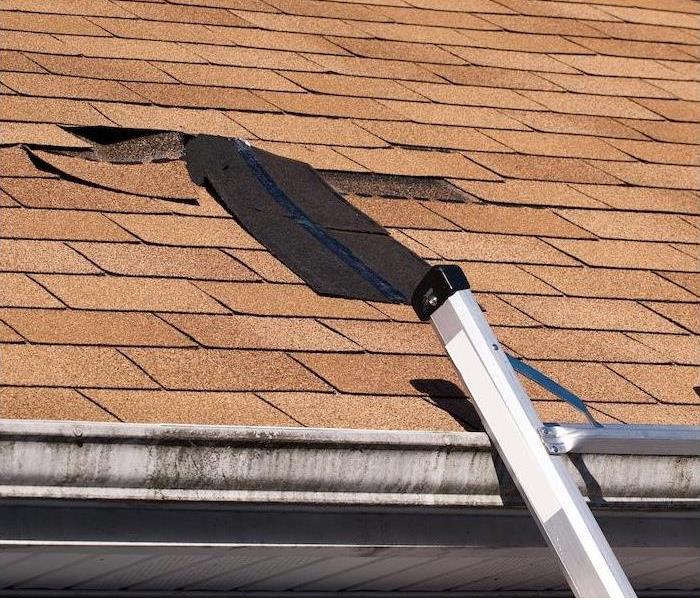 This is a roof has a shingle that needs to be repaired before a storm hits to prevent from interior home damages.
This is a roof has a shingle that needs to be repaired before a storm hits to prevent from interior home damages.
Though there is no way to determine the type of damage that any given storm will do, taking storm damage prevention seriously is one of the smartest things for homeowners to consider when thinking of ways to keep their home resilient.
Severe weather can cause serious amounts of damage, but with the simplicity of weatherproofing, there is no reason to leave your household at risk. If you are still unsure about how important preparing for storm damage is, read on to discover why it is an important thing for all homeowners to consider.
Storm Damage Is a Common Cause of Insurance Claims
While we all hope that storm damage will not have an impact on our home, homeowners find themselves faced with storm damage quite frequently. In fact, storm damage accounts for around half of the insurance claims filed by homeowners.
While some storm damage can be claimed on insurance and therefore not be costly, it is still a difficult process that can be mitigated with advanced preparation.
Weatherproofing Your House Is a Fairly Simple Project
Implementing weatherproofing around the house is something that most homeowners can do over a weekend to keep their homes more protected during storms.
Simple tasks like checking your roof for missing shingles, cleaning out your gutters regularly to prevent standing water and installing weatherstripping around all the doors and windows of your home are things that do not take very much time but can significantly increase your home’s resilience to storms.
Severe Weather Can Be Unpredictable
There is no way to determine how much damage a storm can cause, so it is better to be prepared for all scenarios instead of waiting until you think a large storm is on the way to implement weatherproofing efforts.
A regular rain shower can turn into a severe thunderstorm in an instant if conditions are right, leading to high winds, hail and heavy rains that can damage a home instantaneously in certain scenarios.
If your home has been damaged by a storm, you can count on us for restoration. You can get in touch with us at any hour to have your restoration process started.
410-749-2221
Understanding Severe Weather Alerts | SERVPRO® of The Lower Shore
3/2/2020 (Permalink)
Storms and flooding are some of the most common and most dangerous weather events that can occur. There are an estimated 16 million thunderstorms a year, many of which result in flooding and severe damages to people and property.
Because of how severe weather can escalate to be so dangerous so quickly, it is important to be informed about the various alerts associated with thunderstorms and flooding. These alerts are issued by national weather experts and can give you insight about when to be on guard and when to take action immediately, so you and your family can stay safe.
Thunderstorm Alerts
A thunderstorm watch and a thunderstorm warning differ in the following ways:
Severe Thunderstorm Watch: A severe thunderstorm watch is an alert that can cover areas as small as a county or as large as several states. These indicate that there is evidence that a severe thunderstorm could move into the area. Residents should be alert to any signs of bad weather and continue to monitor official alerts.
Severe Thunderstorm Warning: A severe thunderstorm warning indicates that a severe thunderstorm has been reported or is showing on the radar. A watch means that there could be serious hazards that are associated with thunderstorms present to those who will be experiencing the storm and residents should seek shelter immediately.
Flood Alerts
There are several types of alerts associated with flooding:
Flood Advisory: Occurs when rainfall levels are favorable enough to produce a flood, but it is not expected to be severe. It may mean flooding is in very isolated areas, but it is still important to be aware.
Flood Watch: If conditions are favorable for flooding, a flood watch will be issued. It is not guaranteed to occur, but residents should be aware and stay informed by listening to the weather and emergency updates throughout the period of bad weather.
Flood Warning. A flood warning is issued when flooding is occurring somewhere in the area and could begin to spread. Residents should take action by collecting their family members, pets and emergency kits and moving to higher ground.
Flash Flood Warning: If a flash flood is occurring or about to occur, a flash flood warning is issued. Because flash floods are so sudden, it is important to act quickly should this alert be issued.
Severe thunderstorms and flooding can be scary, but if you have home damage as a result of one of these occurrences, we are always here to help. Call our emergency line at any hour to learn how we can help restore your home.
(410)749-2221
Making Flood Preparations for Your Household | SERVPRO® of The Lower Shore
12/9/2019 (Permalink)
Preparing for floods is something that no one should take lightly. While flooding was once considered a fairly isolated incident, it has become increasingly common and is impacting more and more areas when it occurs.
To protect yourself and your family, knowing what to do in the event of a flood will be extremely valuable. Not only can that help you mitigate damage to your home, but it will also keep your family safe and ensure you can recover quickly after the flood water subsides.
Here’s what to know to make flood preparations for your household:
- Know the Difference Between a Flood Watch and Warning
To stay aware of emergency flood alerts, knowing their definitions is extremely important. A flood watch means that flooding is possible and that you should be prepared to move to higher ground on short notice. A flood warning means that flooding is imminent or currently occurring nearby. In both cases, it is important to always listen to emergency broadcasts for instructions and updates.
- Make Your Flood Evacuation Plan and Emergency Kit
Work with your household to create a plan for flooding that takes into account everyone’s needs (including pets, if applicable). Plan both for situations where you are instructed to stay at home and where you are instructed to evacuate—and make sure you are aware of area shelters that will take flood victims. Assemble a flood disaster kit that takes everyone’s needs into account so you can quickly grab it and leave if instructed to evacuate.
- Know What You Will Do After a Flood
When the floodwaters recede and officials provide you with an all-clear to return to your home, it is important to have a plan of action. If your homeowner’s policy does not include it, consider purchasing flood insurance to help you recover. It is also helpful to research certified flood restoration professionals in your area so you can call them and begin the restoration process right away.
If your home has been impacted by a flood, you can call us 24⁄7 for restoration. We are certified professionals here to help you recover your home and belongings following water and flood damage.
Winterizing your home
2/20/2019 (Permalink)
The cool, crisp days of fall are officially upon us, and with winter just around the corner, it’s time to put the memories of pool parties, backyard barbecues, and late-night summer soirées in the rearview mirror. But that doesn’t mean we have to swear off spending time outdoors until spring. With just a few adjustments, your alfresco space can get as much foot traffic as the rest of the home during the colder months.
1. Rearrange furniture
2. Opt for a muted color palette
3. Add accessories
4. Replace plants
5. Use a mix of materials
6. Invest in high-quality furniture that will last
7. Consider a larger-scale design project
Call your Franchise Professionals today. At SERVPRO of The Lower Shore, we make it "Like it never even happened." 410-749-2221
When Ice Strikes
1/17/2017 (Permalink)
Ice Dams can be a major problem during the winter season. They form when heated air from your home or business rises into the attic spaces and heats the roof from the inside out. This heat melts roof snow downward into water dammed behind still-frozen ice. When the trapped water cannot safely flow or run into the gutter system, it can backflow under the roof’s shingles and into the structure’s interior areas causing water and mold damage to insulation, ceilings and soffits. This can also loosen your shingles, pull or tear off gutters.
Climbing onto your roof to fix the problem yourself is dangerous and could lead to serious personal injury and increase the damage to your home or business. There are multiple methods to help avoid ice dams on the market, including attic insulation and ventilation and having a good quality waterproof underlayment. Please refer to a licensed contractor for assistance in protecting your home to ensure your personal safety and the safety of your home or business.
One of the biggest steps in ice dam prevention is making sure your gutters are clean and having a debris protection system. Debris causes water to back up and gives the ice dam process a jump start.
The interior leaks caused by ice dams might not be visible right away. It is not uncommon that the water pushed into your structure will travel around walls and vapor barriers until it finds a path that might lead to an area where you do see it. By the point you see water inside, it usually has been there for a while which can cause mold to develop.
SERVPRO of the Lower Shore's professional staff can help mitigate water damage caused by ice dams and help you get your structure back to pre-loss condition. Contact our offices for fast, efficient service at (410)749-2221 or visit us on the web at www.SERVPROthelowershore.com
Sump Pump Failure in your Queen Annes County Home
12/15/2016 (Permalink)
Sump Pump Failure
A ‘sump pump’ is ‘a pump used to remove water that has accumulated in a water collecting sump basin, commonly found in the basement of homes’. For the most part, sump pumps are relatively ‘unnecessary’, but when an emergency arises, you’ll be grateful you had it. A sump pump can easily avoid the crisis of having a flooded basement by draining all excess water back outside. However, when it fails, it’ll cost you a basement and thousands of dollars in water damage.
How does a sump pump fail?
It’s Installed Incorrectly
Instructions administered by the manufacturer must be followed diligently in order for the sump pump to be installed properly. Another issue is the size of the sump pump; while a small one can work just as fine as its larger counterpart, you must install the right size in order for it to function properly.
There Was A Power Failure
This is the most common cause of a sump pump’s failure, which renders this devise useless. A backup generator is always a good investment to make.
Problems With The Switch
This is the most common mechanical problem: a stuck switch. Debris can jam it and render it useless, or the pump can shift and the float can get stuck. A little cleaning and some adjustments to the sump pump’s position can go a long way to prevent this.
The Discharge Lines Are Frozen Or Clogged
Debris can clog the discharge lines, cause flood water to retreat back into the basement (to prevent this, be sure to install a grate at the opening of your pipe, preventing debris and even small animals from entering).
Prevention of frozen pipes is practically impossible. However, you can install an additional discharge line that continues to perform the original discharge line’s purpose when it is ineffective.
Age
Sump pumps can be worn down over time and cease to work after 7-10 years of use. It’s best to replace your sump pump every ten years.
There Is No Air Relief Hole in Discharge Line
Gravel or Dirt?
Gravel and dirt can interfere with your pump’s switch and float arm. If you are unsure about your pump’s installation, contact a professional.
Lack of Maintenance
Clean your sump pump occasionally to make sure that it’s operational.
You Might Have A Defective Product
It’s rare, but you could have had a defective sump pump. It’s best to test it upon installation to be assured that there are no defects.
Call us for help: SERVPRO of the Mid/Upper Shore 410-758-8770
Sump Pump Failure in your Wicomico County Home
11/15/2016 (Permalink)
Sump Pump Failure
A ‘sump pump’ is ‘a pump used to remove water that has accumulated in a water collecting sump basin, commonly found in the basement of homes’. For the most part, sump pumps are relatively ‘unnecessary’, but when an emergency arises, you’ll be grateful you had it. A sump pump can easily avoid the crisis of having a flooded basement by draining all excess water back outside. However, when it fails, it’ll cost you a basement and thousands of dollars in water damage.
How does a sump pump fail?
It’s Installed Incorrectly
Instructions administered by the manufacturer must be followed diligently in order for the sump pump to be installed properly. Another issue is the size of the sump pump; while a small one can work just as fine as its larger counterpart, you must install the right size in order for it to function properly.
There Was A Power Failure
This is the most common cause of a sump pump’s failure, which renders this devise useless. A backup generator is always a good investment to make.
Problems With The Switch
This is the most common mechanical problem: a stuck switch. Debris can jam it and render it useless, or the pump can shift and the float can get stuck. A little cleaning and some adjustments to the sump pump’s position can go a long way to prevent this.
The Discharge Lines Are Frozen Or Clogged
Debris can clog the discharge lines, cause flood water to retreat back into the basement (to prevent this, be sure to install a grate at the opening of your pipe, preventing debris and even small animals from entering).
Prevention of frozen pipes is practically impossible. However, you can install an additional discharge line that continues to perform the original discharge line’s purpose when it is ineffective.
Age
Sump pumps can be worn down over time and cease to work after 7-10 years of use. It’s best to replace your sump pump every ten years.
There Is No Air Relief Hole in Discharge Line
Gravel or Dirt?
Gravel and dirt can interfere with your pump’s switch and float arm. If you are unsure about your pump’s installation, contact a professional.
Lack of Maintenance
Clean your sump pump occasionally to make sure that it’s operational.
You Might Have A Defective Product
It’s rare, but you could have had a defective sump pump. It’s best to test it upon installation to be assured that there are no defects.
Call us for help: SERVPRO of the Lower Shore (410)749-2221
Hurricane Season in Wicomico, Worchester and Somerset County - Be Prepared
10/5/2016 (Permalink)
With Hurricane season here, there are two keys to weather safety that everyone should know. Below are tips on how to prepare your Salisbury, Fruitland, Ocean City and Princess Anne home for Hurricane Season. That is to PREPARE for the risks and to ACT on those preparations when alerted by emergency officials.
Before a Hurricane:
- To begin preparing, you should build an emergency kit and make a family communications plan.
- Know your surroundings
- Learn the elevation level of your property and whether the land is flood-prone.
- Identify levees and dams in your area and determine whether they pose a hazard to you.
- Learn community hurricane evacuation routes and how to find higher ground.
- Make plans to secure your property
- Cover all of your home's windows
- Install straps or additional clips to securely fasten your roof to the frame structure.
- Be sure trees and shrubs around your home are well trimmed so they are more wind resistant.
- Clear loose and clogged rain gutters and downspouts.
- Reinforce your garage
- Plan to bring in all outdoor furniture, decorations, garbage cans and anything else that is not tied down.
- Determine how and where to secure your boat.
- Install a generator for emergencies.
- If in a high-rise building, when high winds are present, be prepared to take shelter on a lower floor because wind conditions increase with height, and in a small interior room without windows.
- Consider building a safe room.
Call SERVPRO of the Lower Shore - (410)749-2221
Let Hurricane Season Begin with a Plan from SERVPRO of the Lower Shore
9/2/2016 (Permalink)
The 2016 Hurricane Season begins June 1st. It runs through November 30th, though a hurricane can occur at any time throughout the year. The peak season occurs from mid-August to late October. From Hurricane Katrina in late August 2005 to Superstorm Sandy in late October 2013, the United States has seen its fair share of catastrophic storms during the peak hurricane season. From these storms and other tropical disturbances like them, you probably know that you should heed evacuation orders. But is your home or business prepared for hurricane season?
The US has not been directly hit by a major hurricane (category 3 or higher) in more than a decade. According to NOAA, the National Oceanic and Atmospheric Administration, “Many people are suffering from hurricane amnesia in the forms of complacency, denial and inexperience. This remarkable hurricane streak is going to end, and we have to be ready for it to happen this season.”
The first step in making sure your home or business is prepared for natural disasters is to check your insurance coverage. Make sure you have enough insurance to repair or even replace your home. Don’t forget coverage for your car or boat. Remember that standard homeowners insurance doesn’t cover flooding! You will need a separate policy for that, and it requires a 30-day waiting period. Depending on your location, you may not even be able to purchase it during the height of hurricane season. To learn more about flood insurance, visit the National Flood Insurance Program website at www.floodsmart.gov. To learn more about your homeowners policy, download and review: A Homeowner's Insurance Guide to Natural Disasters.
Your next step is to prepare the structure for whatever happens. At the very least, have the proper plywood, steel or aluminum panels to board up the windows and doors. Remember, the garage door is the most vulnerable part of the home, so it must be able to withstand the winds. Call your local SERVPRO franchise to come to your business and complete an ERP, Emergency Ready Profile (or ask how you can create your own for your home). The ERP is a complimentary assessment of your facility that will help you prepare your staff for Mother Nature’s worst. Email us for more information or to schedule your assessment today.
For more resources on how to prepare your home, visit any or all of the following websites:
FLASH (Federal Alliance for Safe Homes) http://www.flash.org/protect.php
National Hurricane Center http://www.nhc.noaa.gov/
National Weather Center http://www.weather.gov/
FEMA www.fema.gov
NOAA http://www.nws.noaa.gov/com/weatherreadynation/hurricane_preparedness.html
And if the worst does happen, call us to help you with your cleanup. We can help make it “like it never even happened®.” #410-749-2221
When Storms or Floods hit Somerset, Wicomico or Worchester County, SERVPRO is ready!
7/15/2016 (Permalink)
SERVPRO of the Lower Shore specializes in storm and flood damage restoration. Our crews are highly trained and we use specialized equipment to restore your property to its pre-storm condition.
Faster Response
Since we are locally owned and operated, we are able to respond quicker with the right resources, which is extremely important. A fast response lessens the damage, limits further damage, and reduces the restoration cost.
Resources to Handle Floods and Storms
When storms hit Somerset, Wicomico or Worchester County, we can scale our resources to handle a large storm or flooding disaster. We can access equipment and personnel from a network of 1,650 Franchises across the country and elite Disaster Recovery Team that are strategically located throughout the United States.
Have Storm or Flood Damage? Call Us Today 410-749-2221
 Snow scenes across the Shore can be beautiful, but heavy snow and wind can cause damage to your home. SERVPRO of The Lower Shore (410) 749-2221.
Snow scenes across the Shore can be beautiful, but heavy snow and wind can cause damage to your home. SERVPRO of The Lower Shore (410) 749-2221.




 24/7 Emergency Service
24/7 Emergency Service